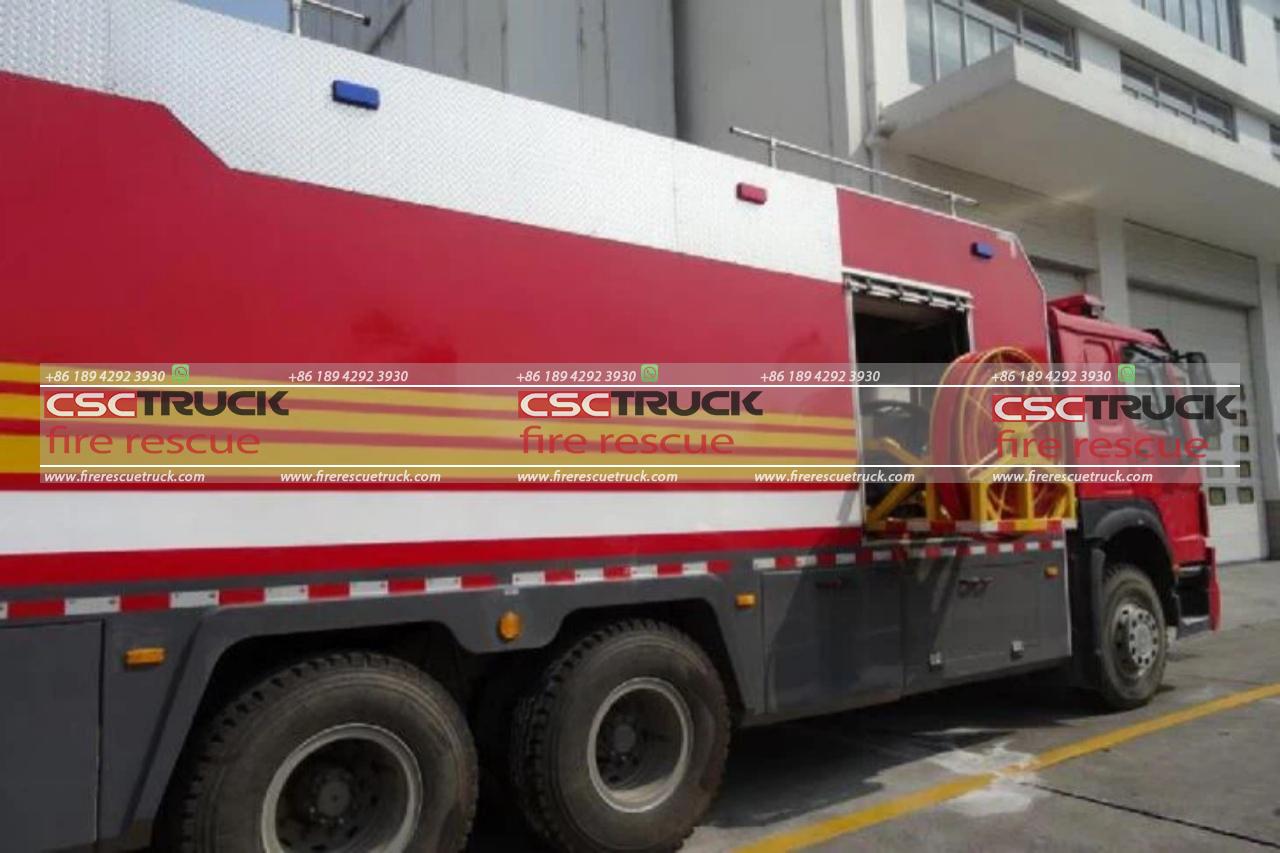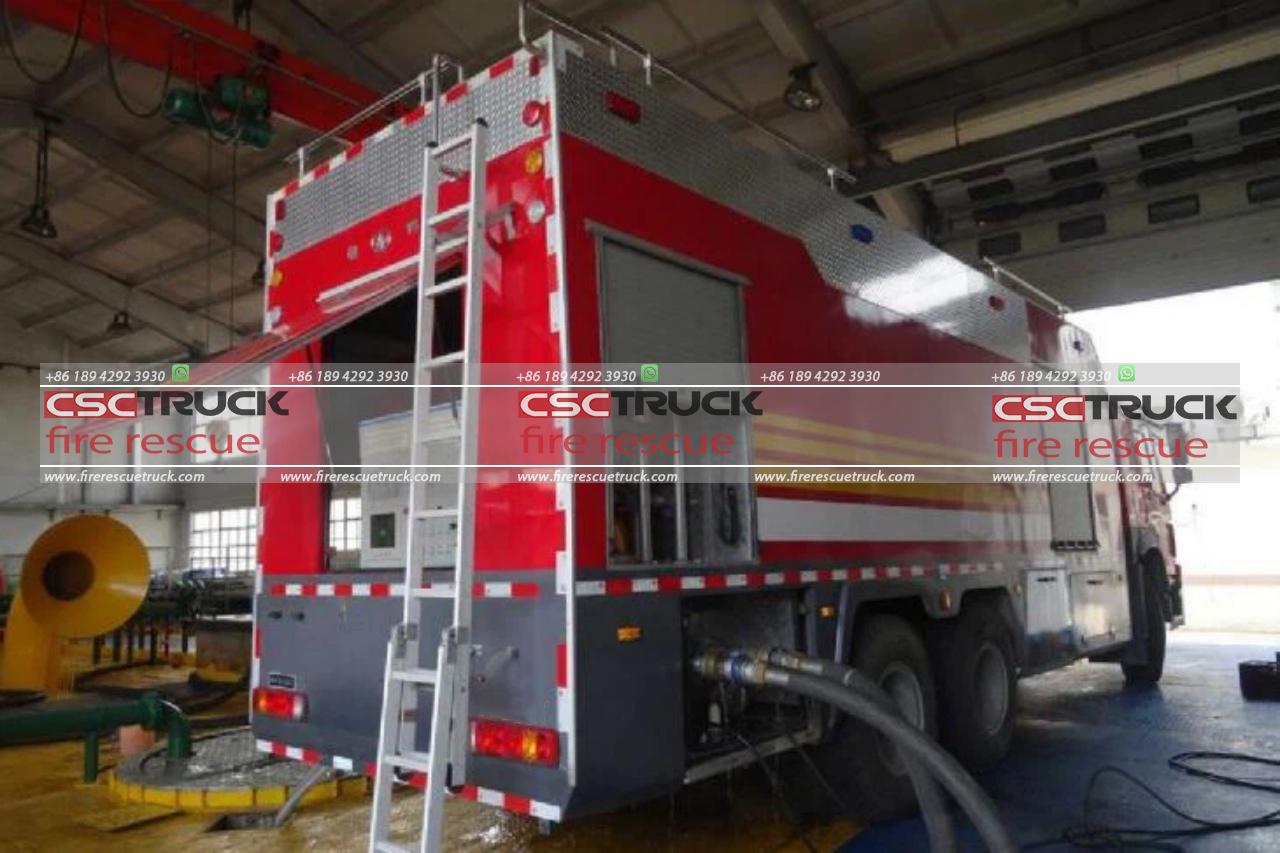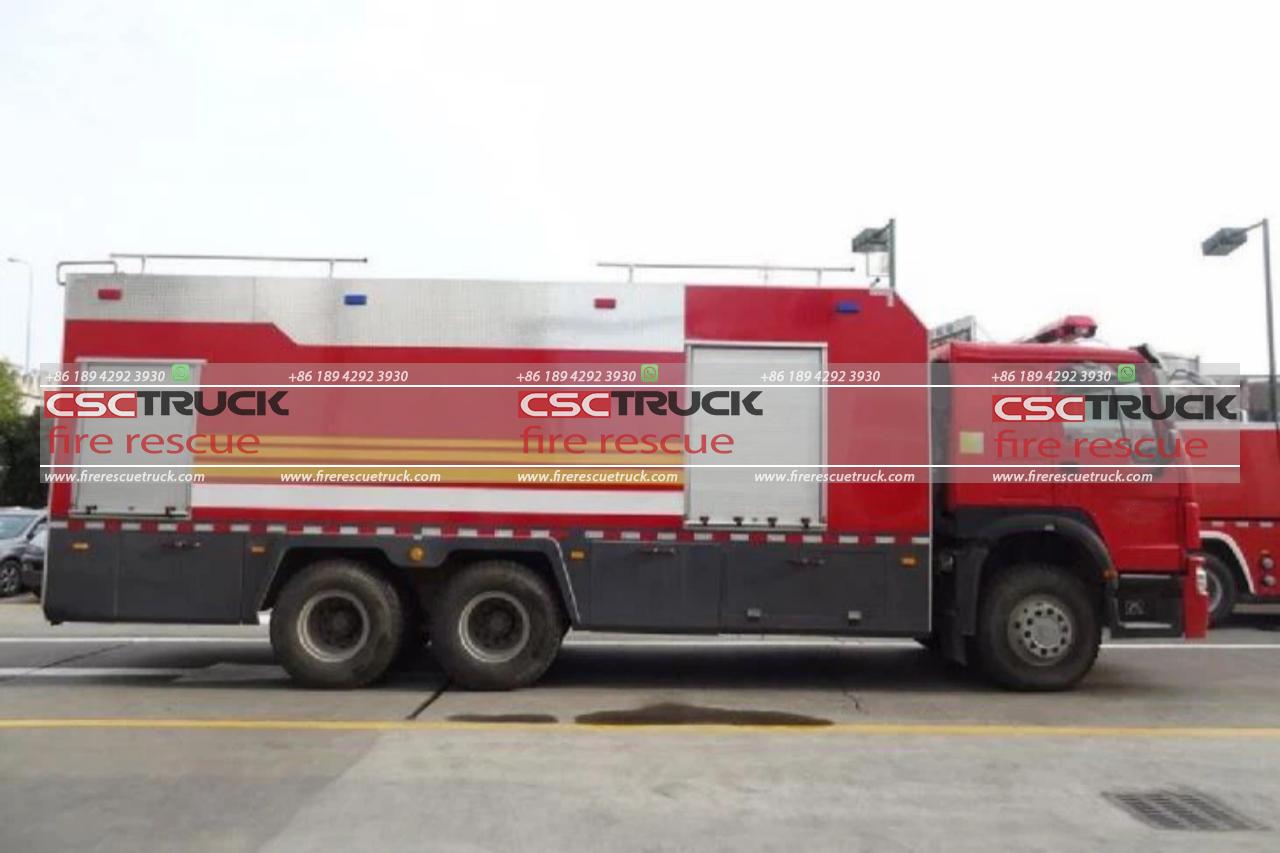In the relentless battle against wildfires and industrial fires, one indispensable tool stands out: the foam transfer truck. These robust vehicles are not just transporters; they are the frontline defenders against the relentless march of flames. With their ability to rapidly deploy foam, they form a crucial component in the arsenal of firefighters worldwide. In this article, we delve into the significance of foam transfer trucks, their mechanisms, and their role in swift fire suppression.
Understanding the Threat: The Urgency of Fire Suppression
Fire, a force of nature, can wreak havoc within minutes, devouring everything in its path. From forests to industrial facilities, its destructive potential knows no bounds. Traditional water-based suppression methods often fall short in combating certain types of fires, especially those involving flammable liquids or gases. These fires require a different approach, one that can smother the flames effectively while preventing reignition.
Enter Foam Transfer Trucks: The Unsung Heroes
Foam transfer trucks emerge as the unsung heroes in the firefighting realm, offering a potent solution to combat infernos fueled by flammable substances. Unlike water, foam forms a thick blanket over the fire, cutting off its oxygen supply and suffocating it. These trucks carry large quantities of foam concentrate, which, when mixed with water, produces foam capable of rapidly extinguishing fires.

Mechanism of Action: How Foam Transfer Trucks Work
Foam transfer trucks operate on a simple yet effective principle. They carry tanks filled with foam concentrate, usually a mixture of water, foam stabilizers, and surfactants. When deployed to a fire scene, these trucks pump the concentrate into a water stream, creating foam on demand. The foam, with its unique properties, blankets the fire, suppressing it and preventing re-ignition.
Versatility in Application: From Forests to Factories
One of the notable features of foam transfer trucks is their application versatility. They are equally adept at combating wildfires in remote wilderness areas and containing industrial fires in densely populated urban centers. In forest firefighting, these trucks can navigate rugged terrain to reach the heart of the blaze, which traditional fire engines struggle to access. In industrial settings, they provide a crucial line of defense against fires involving hazardous materials, safeguarding lives and property.
Rapid Response: The Key to Effective Fire Suppression
Time is of the essence in firefighting, where every second counts. Foam transfer trucks excel in rapid response, thanks to their ability to deploy foam to smother flames quickly. Unlike traditional firefighting methods that require time-consuming setup, these trucks can be on the move within minutes of arriving at the scene. This swift response is instrumental in containing fires before they escalate, minimizing damage and saving lives.

Environmental Considerations: Foam as a Sustainable Solution
In addition to their efficacy in fire suppression, foam transfer trucks offer environmental benefits as well. The foam used in firefighting is biodegradable and poses minimal risk to the environment. Furthermore, by extinguishing fires more rapidly, these trucks help reduce the release of harmful pollutants into the atmosphere, mitigating the environmental impact of fires.
Challenges and Innovations: Advancing Firefighting Technology
Despite their effectiveness, foam transfer trucks face challenges in dealing with increasingly complex fire scenarios. Innovations in firefighting technology, however, are addressing these challenges head-on. Advancements such as automated foam dispensing systems, enhanced foam formulations, and improved vehicle design are making foam transfer trucks more efficient and adaptable to evolving fire dynamics.
Collaborative Efforts: Strengthening Firefighting Capabilities
The battle against fires requires a collaborative effort involving firefighters, emergency responders, and communities at large. Foam transfer trucks are integral to this collective endeavor, providing frontline support to fire suppression teams across the globe. Through training, coordination, and investment in firefighting infrastructure, we can enhance our collective ability to respond to fires swiftly and effectively.

Conclusion: Upholding the Shield Against Flames
In the face of fire’s relentless onslaught, foam transfer trucks stand as stalwart guardians, upholding the shield against flames. Their rapid deployment, versatile application, and environmental sustainability make them indispensable assets in the firefighting arsenal. As we continue to confront the challenges posed by wildfires and industrial fires, let us recognize the vital role of foam transfer trucks and ensure they remain at the forefront of our efforts to protect lives, property, and the environment from the ravages of fire.







